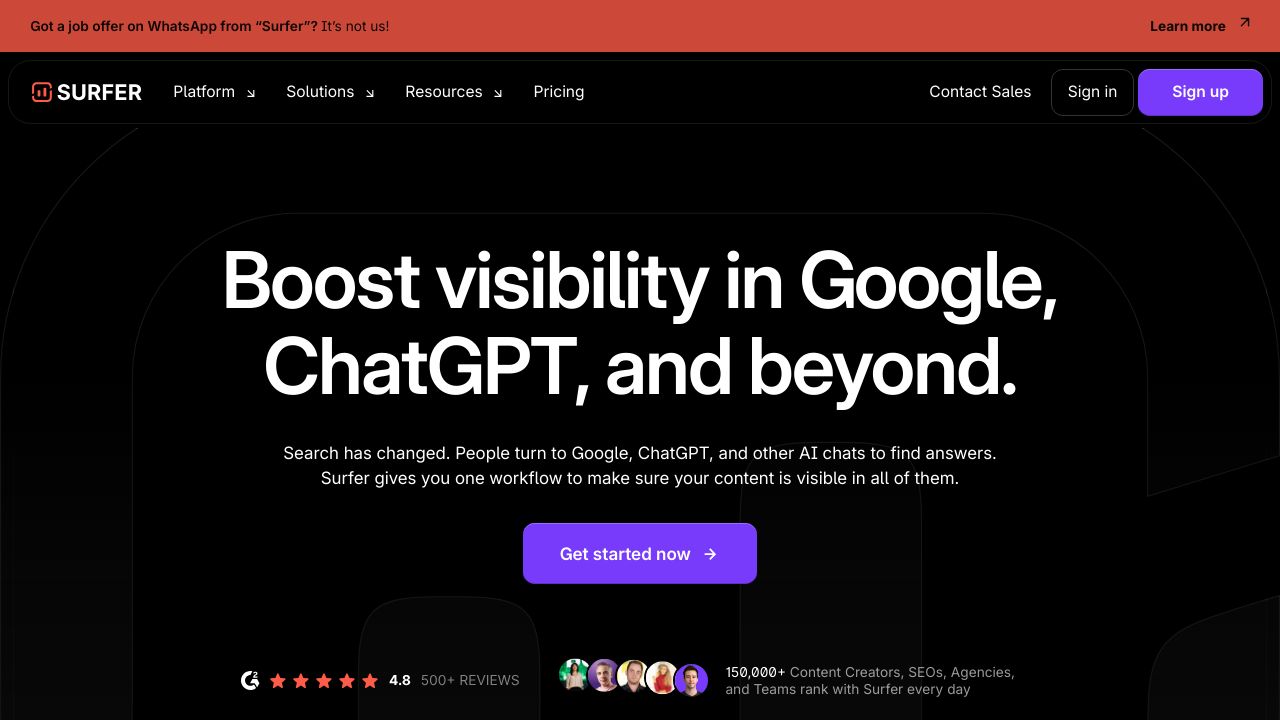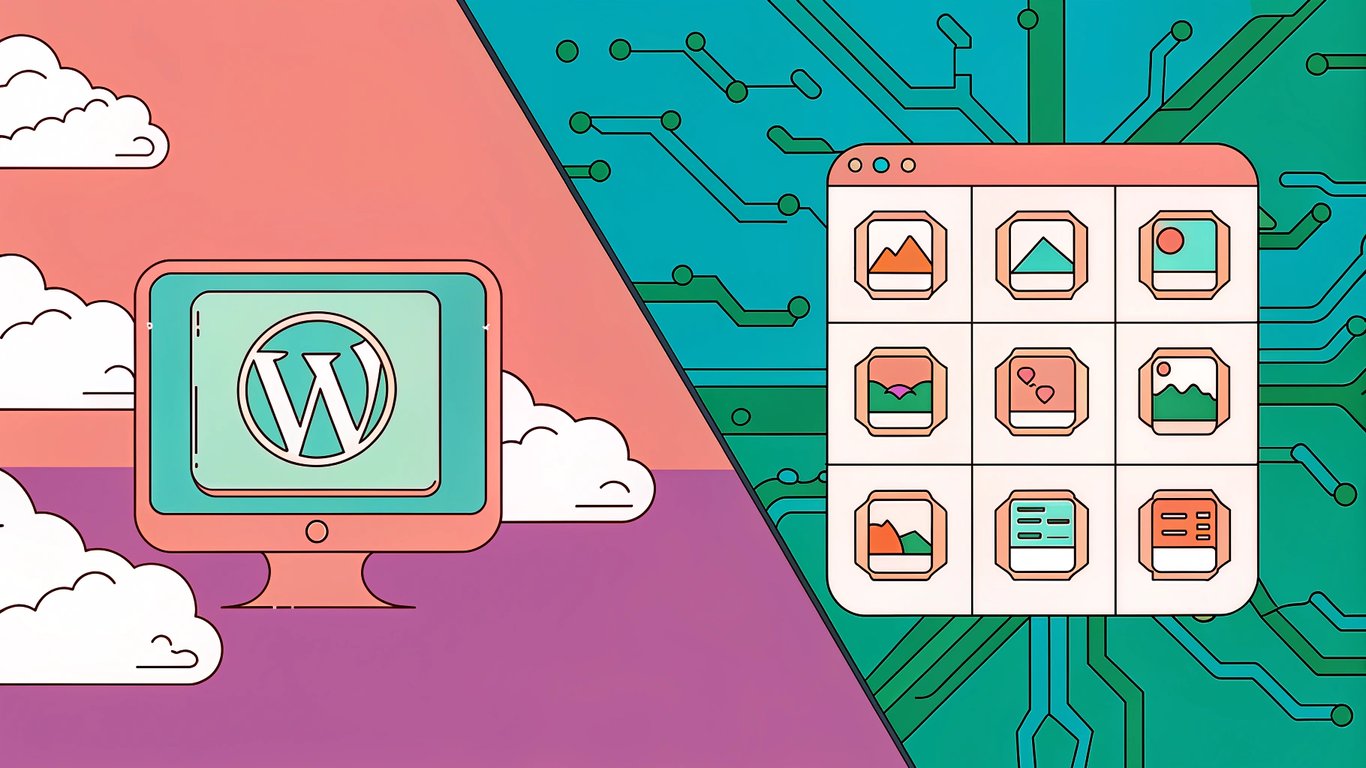Getting traffic to your WordPress blog isn't what it used to be. The days of publishing a post and watching visitors pour in are long gone. Search algorithms have gotten smarter, user behavior has shifted, and competition has intensified across every niche imaginable.
But here's the thing: while traditional methods are struggling, AI tools are opening up entirely new possibilities for how to drive traffic to your blog. We're not talking about replacing human creativity. We're talking about amplifying it.
Why Traditional Traffic Methods Aren't Enough Anymore

Google's algorithm updates have fundamentally changed what works. The search engine now prioritizes content that demonstrates expertise, experience, authoritativeness, and trustworthiness. Simply stuffing keywords into mediocre content won't cut it.
Social media platforms have also shifted toward pay-to-play models. Organic reach on Facebook has dropped to around 5% for business pages. Twitter's algorithm changes constantly. LinkedIn prioritizes native content over external links.
Meanwhile, your audience's attention span has shortened. They're consuming content across multiple platforms, expecting personalized experiences, and making split-second decisions about whether your content deserves their time.
The Power of AI-Driven Traffic Generation
AI tools can analyze massive datasets to identify content gaps, optimize for search intent, and personalize outreach at scale. They can help you understand what your competitors are doing right, spot trending topics before they explode, and create content variations for different platforms.

The key is using AI strategically, not as a replacement for human insight but as a multiplier for your efforts. When you combine human creativity with AI efficiency, you can compete with much larger teams and budgets.
1. AI-Powered SEO Content Optimization for Organic Growth
SEO remains one of the most reliable ways to drive consistent traffic to your WordPress blog. But modern SEO requires understanding search intent, content gaps, and user behavior patterns that would take humans weeks to analyze manually.
Using AI for Keyword Research and Content Gap Analysis
Tools like Surfer SEO and Clearscope analyze top-ranking pages to identify semantic keywords and content structures that search engines favor. Instead of guessing what Google wants, you can see exactly what's working for your competitors.
ChatGPT and similar language models can help you brainstorm keyword variations and long-tail opportunities that traditional keyword tools might miss. Ask it to generate questions your target audience might search for, then validate those queries with actual search volume data.
The real power comes from combining these insights. Use AI to identify content gaps where you can provide better, more comprehensive answers than existing results.

Automated Content Audits and Refresh Strategies
Your existing content is probably your biggest untapped traffic source. AI tools can crawl your entire blog, identify pages that are losing rankings, and suggest specific improvements.
MarketMuse analyzes your content against current search results to identify where you're falling behind. It might suggest adding specific subtopics, updating statistics, or expanding certain sections.
Set up automated alerts for when your rankings drop or when competitors publish new content targeting your keywords. This lets you respond quickly instead of discovering problems months later.
WordPress-Specific SEO Plugins Enhanced with AI
RankMath and Yoast have integrated AI features that go beyond basic optimization suggestions. They can analyze your content's readability, suggest internal linking opportunities, and even help optimize for featured snippets.
The key is not just installing these plugins but actually implementing their suggestions. Many WordPress users ignore the recommendations, missing easy wins that could significantly boost their search visibility.

2. Strategic Content Refreshing with AI-Driven Insights
Content refreshing might be the most underutilized traffic strategy out there. Instead of always creating new content, updating your existing posts can deliver faster results with less effort.
AI Content Analysis for Performance Gaps
AI tools can compare your content against current top performers to identify specific gaps. Maybe your 2022 guide to social media marketing is missing information about newer platforms. Or your product review doesn't cover features that competitors are highlighting.
Frase excels at this type of analysis. It shows you exactly what topics and subtopics the top-ranking pages cover, making it easy to identify what you're missing.
Automated Content Update Workflows
Create a system for regularly reviewing and updating your content. AI can help prioritize which posts to update first based on their traffic potential and current performance.

- Set up monthly content audits using AI analysis tools
- Create templates for common update types (statistics, examples, new sections)
- Track which updates generate the biggest traffic increases
- Automate the process of identifying outdated information
Measuring Refresh Impact on Traffic Growth
Track your content refresh efforts carefully. Google Analytics can show you which updated posts are gaining traffic, but AI-powered tools like Google Search Console combined with data analysis tools provide deeper insights.
Look for patterns in what types of updates work best. Maybe adding FAQ sections consistently boosts rankings, or updating statistics has the biggest impact on click-through rates.
3. AI-Scaled Outreach for High-Quality Backlinks
Backlinks remain a crucial ranking factor, but manual outreach is time-consuming and often ineffective. AI can help you identify better prospects, craft more compelling pitches, and maintain relationships at scale.
AI-Powered Prospect Research and Identification
Tools like Pitchbox and BuzzStream use AI to find relevant websites and contact information. But the real value comes from their ability to analyze which prospects are most likely to respond positively.
AI can analyze a website's linking patterns, content themes, and social media activity to determine if they're a good fit for your outreach. This helps you focus on quality prospects instead of sending hundreds of generic emails.
Personalized Email Outreach at Scale
Generic outreach emails have terrible response rates. AI can help you personalize messages by analyzing the recipient's recent content, social media posts, and website updates.
Instead of "I love your blog," you can reference their specific recent post about industry trends. Instead of generic value propositions, you can mention how your content complements their existing resources.
Relationship Building Through AI-Enhanced Communication
Building relationships with other bloggers and website owners is a long-term strategy that pays dividends. AI can help you stay on top of your network by tracking when contacts publish new content, mention topics relevant to your expertise, or engage with your social media posts.
Set up alerts for when your contacts need expert quotes, launch new projects, or discuss topics where you could provide value. This lets you engage naturally instead of only reaching out when you need something.
4. Social Media Amplification Using AI Content Distribution
Social media can drive significant referral traffic, but each platform has different audiences, formats, and optimal posting times. AI tools can help you adapt your content for multiple platforms without starting from scratch each time.
AI-Generated Social Media Content Variations
Take your blog post and use AI to create platform-specific versions. A comprehensive guide might become a Twitter thread, LinkedIn carousel, Instagram story series, and YouTube video outline.
Tools like Buffer and Hootsuite now include AI features that can suggest post variations, optimal hashtags, and even generate captions based on your content.
Optimal Timing and Platform Selection
AI can analyze your audience's behavior patterns to determine when they're most active on each platform. This goes beyond generic "best times to post" advice to provide insights specific to your followers.
Some of your content might perform better on LinkedIn's professional audience, while other posts resonate more with Twitter's real-time conversation style. AI can help you match content types to platforms for maximum engagement.
Community Engagement and Relationship Building
AI tools can help you identify relevant conversations, trending hashtags, and influential users in your niche. Instead of randomly engaging with posts, you can focus on interactions that are most likely to build meaningful relationships.
Monitor mentions of your brand, competitors, and industry keywords. When someone asks a question you can answer, or shares an opinion you can add to, AI alerts let you join conversations while they're still active.
5. Guest Posting and Collaboration Strategies Enhanced by AI
Guest posting remains one of the most effective ways to build authority and drive referral traffic. AI can help you identify better opportunities, craft more compelling pitches, and create content that actually gets accepted.
AI-Driven Guest Post Opportunity Discovery
Instead of manually searching for "write for us" pages, AI tools can analyze websites in your niche to identify which ones regularly publish guest content, what topics they prefer, and what their submission requirements are.
Look for sites that have published guest posts similar to your expertise but haven't covered your specific angle. These represent the best opportunities because you're filling a content gap rather than competing with existing posts.
Crafting Winning Guest Post Pitches with AI
AI can analyze successful guest post pitches to identify common elements and help you craft more compelling proposals. It can suggest subject lines, opening hooks, and value propositions based on what has worked for similar outreach.
The key is demonstrating that you understand the target site's audience and content style. AI can help you analyze their recent posts to identify gaps you could fill or angles they haven't explored.
Creating High-Converting Guest Content
Your guest posts need to provide value to the host site's audience while subtly driving traffic back to your blog. AI can help you strike this balance by analyzing what types of content perform best on each platform.
Focus on creating content that naturally leads readers to want more information. Instead of obvious self-promotion, provide genuinely helpful insights that make readers curious about your other work.
6. Email Marketing Integration for Traffic Multiplication
Email marketing consistently delivers the highest ROI of any digital marketing channel. When you combine it with AI personalization and automation, it becomes a powerful traffic driver for your WordPress blog.
AI-Optimized Lead Magnets and Opt-in Forms
AI can analyze your blog content to identify which topics generate the most engagement, then help you create lead magnets around those themes. Instead of guessing what your audience wants, you can base your offers on actual behavior data.
Test different opt-in form placements, copy variations, and incentives using AI-powered tools that can automatically optimize for higher conversion rates.
Personalized Email Campaigns That Drive Traffic
AI can segment your email list based on reading behavior, interests, and engagement patterns. Instead of sending the same newsletter to everyone, you can customize content recommendations for different subscriber groups.
Someone who frequently reads your marketing posts might receive different content suggestions than someone who prefers your technical tutorials. This personalization increases click-through rates and keeps subscribers engaged longer.
Automated Email Sequences for Content Promotion
Set up automated sequences that promote your best content to new subscribers over time. AI can help determine the optimal timing and frequency for these emails based on subscriber behavior patterns.
Create different sequences for different subscriber sources. Someone who subscribed after reading a specific blog post might be interested in related content, while someone who joined through social media might prefer a broader introduction to your expertise.
7. Community Building and Engagement Through AI-Assisted Networking
Building genuine relationships within your industry creates long-term traffic opportunities that go beyond individual campaigns. AI can help you identify and engage with the right communities more effectively.
Identifying and Joining Relevant Online Communities
AI tools can analyze social media conversations, forum discussions, and online groups to identify where your target audience is most active. Look for communities where people ask questions you can answer and share challenges you've solved.
Focus on quality over quantity. It's better to be genuinely helpful in three relevant communities than to spam dozens with promotional content.
AI-Enhanced Content for Community Engagement
Create content specifically designed for community sharing. AI can help you identify trending topics, common questions, and content formats that perform well in different communities.
The goal isn't to promote your blog directly but to establish yourself as a helpful expert. When community members recognize your expertise, they'll naturally check out your other content.
Building Authority Through Consistent Value Delivery
Consistency matters more than perfection in community building. AI can help you maintain a regular presence by suggesting relevant discussions to join, questions to answer, and content to share.
Track which types of contributions generate the most positive responses and referral traffic. Double down on what works while gradually expanding your approach.
8. Performance Tracking and Optimization with AI Analytics
You can't optimize what you don't measure. AI-powered analytics tools can identify patterns and opportunities that would take humans weeks to discover manually.
Setting Up Comprehensive Traffic Tracking Systems
Beyond basic Google Analytics, set up tracking for specific traffic sources, user behavior patterns, and conversion paths. AI tools can help you identify which traffic sources lead to the most engaged visitors and which content keeps people on your site longest.
Create custom dashboards that show the metrics that matter most for your specific goals. Traffic volume is important, but engagement quality often matters more for long-term success.
AI-Driven Insights for Strategy Optimization
AI can analyze your traffic data to identify trends, seasonal patterns, and optimization opportunities. Maybe certain types of content perform better on specific days, or particular traffic sources convert at higher rates.
Look for correlations between different metrics. High bounce rates might indicate content-audience mismatch, while long session durations could suggest opportunities for better internal linking.
Scaling Successful Tactics with AI Automation
Once you identify what works, AI can help you scale those tactics. If guest posting on certain types of sites drives quality traffic, AI can help you find more similar opportunities. If specific social media strategies work well, automation can help you maintain consistency.
The key is balancing automation with human oversight. AI can handle repetitive tasks and pattern recognition, but strategic decisions and relationship building still require human judgment.
Your AI-Powered Traffic Growth Action Plan
Having eight different strategies is overwhelming if you try to implement them all at once. The key to success is prioritizing based on your current situation and resources.
Prioritizing Tactics Based on Your Current Situation
If you're just starting out, focus on SEO content optimization and strategic content refreshing first. These tactics work with content you already have and don't require building relationships or audiences from scratch.
If you already have decent traffic but want to diversify, prioritize email marketing integration and community building. These strategies help you build owned audiences that aren't dependent on algorithm changes.
For established blogs looking to scale, AI-powered outreach and guest posting can help you reach new audiences and build authority in your niche.
Building Your AI Tool Stack on a Budget
You don't need expensive tools to get started. Many AI features are built into platforms you might already use. WordPress SEO plugins, social media schedulers, and email marketing platforms increasingly include AI capabilities.
| Strategy | Free Options | Premium Tools |
|---|---|---|
| SEO Optimization | Google Search Console, ChatGPT | Surfer SEO, Clearscope |
| Content Refreshing | Google Analytics, AI writing assistants | MarketMuse, Frase |
| Social Media | Buffer free plan, native platform tools | Hootsuite, Sprout Social |
| Email Marketing | Mailchimp free tier, ConvertKit | ActiveCampaign, Klaviyo |
90-Day Implementation Timeline
Month 1: Focus on SEO optimization and content refreshing. Audit your existing content, implement AI-powered SEO improvements, and update your best-performing posts.
Month 2: Add social media amplification and email marketing. Set up automated social sharing, create lead magnets, and begin building your email list.
Month 3: Implement outreach and community strategies. Begin guest posting outreach, join relevant communities, and start building relationships with other bloggers in your niche.
Remember, these strategies work best when combined. Your SEO-optimized content becomes more valuable when you promote it through email and social media. Your community relationships open doors for guest posting opportunities. Your email list amplifies every piece of content you create.
The key is starting with one or two strategies, implementing them consistently, and gradually adding more as you build momentum. AI tools can help you scale your efforts, but they can't replace the need for valuable content and genuine relationship building.



